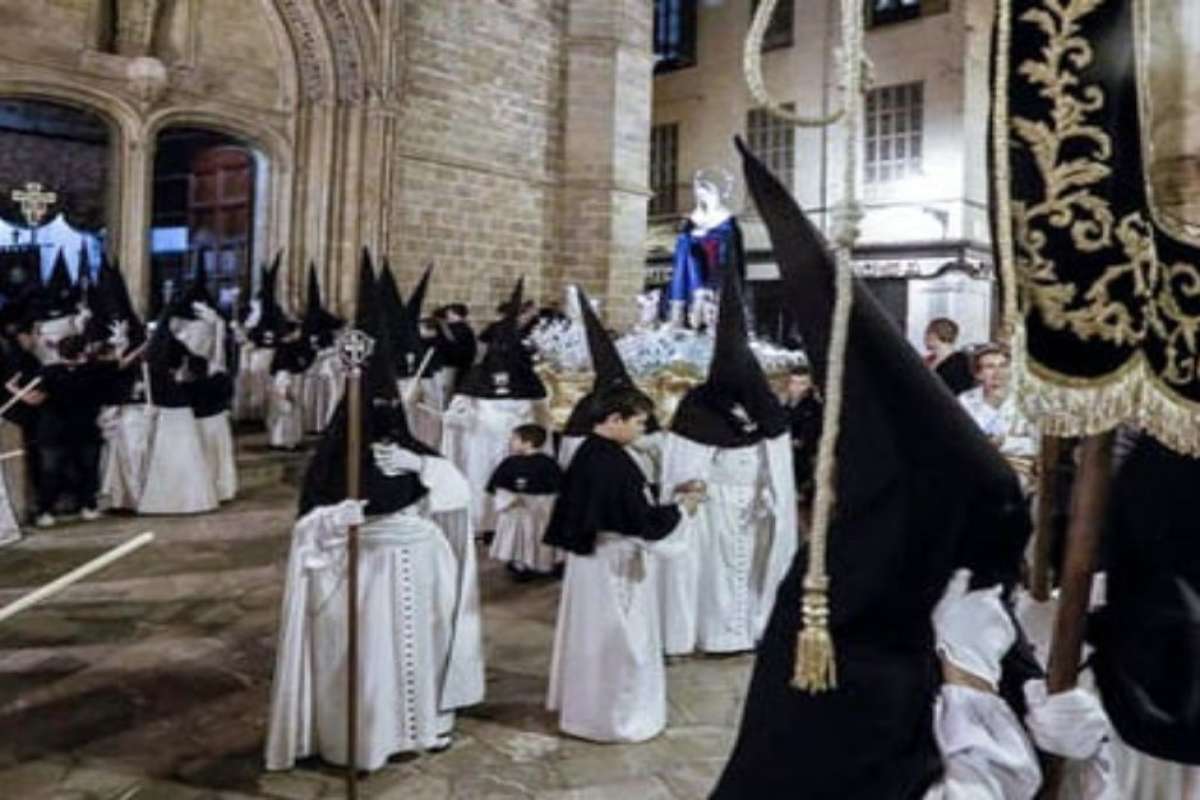
The Oldest Brotherhoods of Palma
Holy Week is approaching, and the brotherhoods have been gearing up for some time now to parade through the streets of the old town of Palma. From Palm Sunday to Easter Sunday, processions take place, but the most popular ones, attracting the most visitors, are those on Maundy Thursday and Good Friday.
In Palma, tradition dictated that penitents carry small aniseed sweets, called "confites," in their pockets and would pass them on to acquaintances they encountered along the way through the altar boys. Nowadays, they distribute candies and the occasional lollipop shaped like a "cowl."
Getting to Know the Oldest Brotherhoods of the City
There are 34 brotherhoods in Palma, and the oldest among them is that of Sant Pere i Sant Bernat, founded in 1370, although its statutes were not approved until 1431, before a notary. This brotherhood is closely linked to the Cathedral of Mallorca as it provided shelter for the poorest priests of the clergy.
Another of the oldest and most anticipated brotherhoods is that of the Christ of the Blood, documented in the 15th century. Traditionally, it departed from the hospital and church of the Blood and visited the convents of Palma so that the enclosed nuns could see the sculpture, which generates great devotion in the city.
Although the route has changed over time, this Easter 2024, the Christ will depart, for the first time, from the Cathedral, as the number of people wanting to see it caused the streets near the starting point to become congested, forming real bottlenecks.
During the 17th and 18th centuries, scenes of the Via Crucis became popular, leading to a series of images and sculptures, sometimes created by renowned sculptors, while the brotherhoods increased according to the guilds that grouped the different trades of the time.
The New Brotherhoods of the 20th Century
From 1902 onwards, brotherhoods inspired by Seville began to be founded, such as the Cross of Calatrava, the Sorrowful Mother, or the Five Wounds, among others, but for the first time, they were no longer linked to a profession but to a parish.
For a while, and until the 1980s, no new brotherhoods were created, and some began to disappear. It was a moment that marked a new change. To revive the tradition, the Brotherhoods Association agreed to a very demanding request: that women could participate in the processions, something that many had been doing for a long time, protected by the anonymity of the cowls.
Lifting the ban saved the tradition, as once again the participation of brotherhood members and penitents increased.
And from the 21st century onwards, with the intention of consolidating the popularity of the processions, it was decided that they would take place throughout Holy Week, not just on Maundy Thursday and Good Friday.
When the floats and brotherhood members take to the streets, silence reigns,only broken by the sound of drums and words of encouragement for the porters. As the evening falls, the large candles carried by the penitents begin to burn out, filling the ground with melted wax—car tires will squeak for a while as they pass over the asphalt—and the atmosphere fills with the scent of flowers accompanying the Virgin.
The taste of aniseed from the confites and sugared almonds transports one to other times when Holy Week in Palma also marked the beginning of school vacations.
